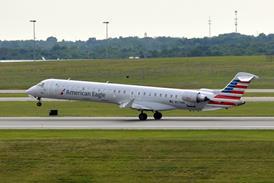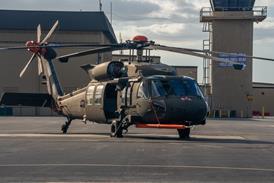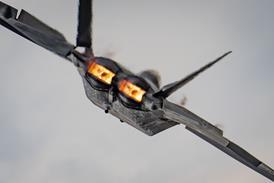JACKSON FLORES / RIO DE JANEIRO
Argentinian angst and Brazilian buoyancy illustrate the vagaries of corporate aviation in South America. Most countries in the region are hoping for better times
Few segments of the business aviation market can simultaneously show the widely diverging growth indicators found in Latin America. The region accounts for slightly more than 13% of the world's corporate aircraft fleet. It includes Brazil, considered by many to be the world's second largest corporate jet and turboprop market, but also contains Argentina, which lost nearly 20% of its business jet fleet in just four months because of extreme economic difficulties since last November. Latin America's corporate aviation market is harnessed to local economies and the vagaries of domestic politics far more than that of North America and Europe.
The Brazilian market clearly leads the pack, with 667 corporate jets and turboprops registered and growth predicted at roughly 6% this year. The country has 2,600 registered airfields spread over 8.6 million km2 (3.4 million square miles), providing an ideal setting for a burgeoning business aircraft market. As domestic carriers provide regular services to fewer than 8% of those airfields, the business aircraft market assumes even greater importance. Moreover, Sao Paulo and Rio de Janeiro, the country's financial hubs, are both considerable distances from major mining facilities and agricultural centres.
Nonetheless, this year's expected increase is below the yearly average 10% growth rate consistently registered since the early 1990s. The head of regional airline TAM's Executive Jet division, Rui Aquino, says: "This is an election year and traditionally aircraft sales experience a slight dip, signalling the general expectancy tied to a possible shift in local economic policies."
The US terrorist attacks of 11 September also worked against the market, but Aquino believes 2003 will bring a significant jump in sales for the division, which is a Cessna distributor as well as a provider of chartered and specialised services, with a large slice of the local corporate aircraft market. There are 128 Cessna Citations of all types flying in Brazil, 65% of them based in Sao Paulo state. Another 93 Cessna 208 Caravans are in service with local air taxi and regional carriers.
Optimistic
Jacques Wladimirsky, head of L¡der Taxi A‚reo, is also optimistic. Founded in 1958 and among the oldest companies in South America providing chartered executive aviation services, L¡der grew 20% in fiscal year 2000-1, with net revenue of $88.6 million. The company expects 15% growth this year with its mixed fleet of 18 Raytheon Hawker 800s, Beechjet 400As, Bombardier Learjet 35As and Beech King Air C90s. As Brazil's Raytheon representative, it hopes to log a sales increase of 10% as it prepares this year to deliver the first Premier I to a local operator.
The Brazilian business jet fleet is dominated by smaller Citations and Learjets, but larger corporate jets such as the Hawker 800 and Dassault's Falcon family are increasingly making their presence felt. Wladimirsky describes the market as "differing from US and European markets in that there is a very strong leaning towards aircraft size and luxury".
The most tangible obstacles to growth are taxes on imported aircraft. With duties hovering at 30% earlier this year, state governments have added to the burden with a 5% tax usually levied on motor vehicles. Only the state of Paran has waived the tax, which has hit sales of business aircraft.
In Argentina, prospects are far from bright. As the country's financial predicament worsens, the nation's corporate aircraft fleet has shrunk. Though 220 business jets and turboprops were registered in mid-2000, that number sank to 168 almost a year later. Of those, 70 were corporate jets, ranging from Learjet 24s to Gulfstream Vs. Last December's financial crisis saw that number plummet to 56 jets by early February, with more expected to leave the country in the coming months.
Carlos Calungo, director of Macair Jet, one of Argentina's largest chartered corporate aviation aircraft companies, draws a sombre picture. "We logged about 1,000 flight hours last year, but we will have a hard time getting past the 50h mark during 2002," he says. The number of Argentinian-registered business aircraft returning from flights abroad backs up this bleak outlook. In 1999, local airports were averaging 75 arriving flights a month, but that number dropped to eight a month in the first two months of this year.
Macair was reduced to a fleet of one Learjet 60, a Gulfstream V and two Learjet 25s, and has now had to return the Gulfstream because of its inability to make payments on the aircraft - a possibility that might also apply to its Learjet 60. With local US dollar funds frozen - or, at best, convertible to Argentinian pesos at low rates - some local operators are waging an uphill struggle merely to maintain their aircraft. Others, wary of past government policy, have taken their aircraft out of Argentina rather than run the risk of having them impounded. Should the country's economy continue on the same track, corporate aviation in Argentina might be limited to the 26 business jets and eight turboprops operated by the country's 23 provincial governments.
Better prospects
Prospects seem better elsewhere on the continent. Colombia is short on business jets but has a large fleet of turboprops, with its corporate aviation fleet surpassed in number only by Brazil and Venezuela. It has few hard-surfaced airfields, so the ratio of business jets to corporate turboprops is about 1:17.
No firm fleet figures are available because many operators avoid registering the aircraft locally to avoid import duties. Another feature of Colombian corporate aviation - as well as that of other countries in the continent - is that there are few multi-aircraft operators.
Although the country's corporate fleet dipped in numbers, yearly revenues among chartered operators have grown at a steady 4% over the past three years. Bogota-based Central Charter, Colombia's largest chartered operator, runs one each of the Learjet 55, Cessna Citation ll, Citation Encore and Citation Bravo, bolstered by a King Air F90 and a Cessna Cheyenne.
Jorge Hernandez, the company's director of operations for Central Charter, is optimistic about his firm's operations. "We have good prospects for 2002-3 and expect a positive growth and new investments for the company," he says.
"The events of 11 September brought a noticeable increase in charter operations for the local oil and textile industries." The country's topography and the threat from insurgents has spurred corporate aircraft sales in the country.
Corporate aviation in other South American states is undergoing a period of relative stability in view of the economic difficulties of the past two years. Last year's US terrorist attacks and the financial uncertainty that followed further inhibited growth, although earlier this year the Venezuelan government took delivery of the continent's first Airbus A319CJ.
Source: Flight International























